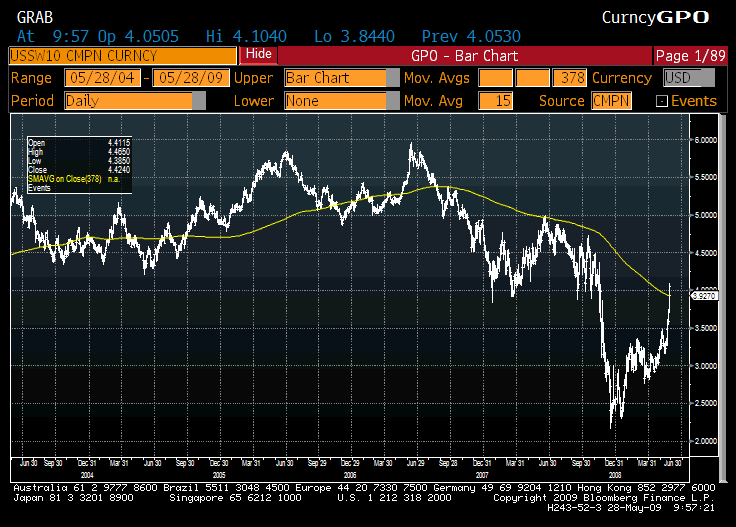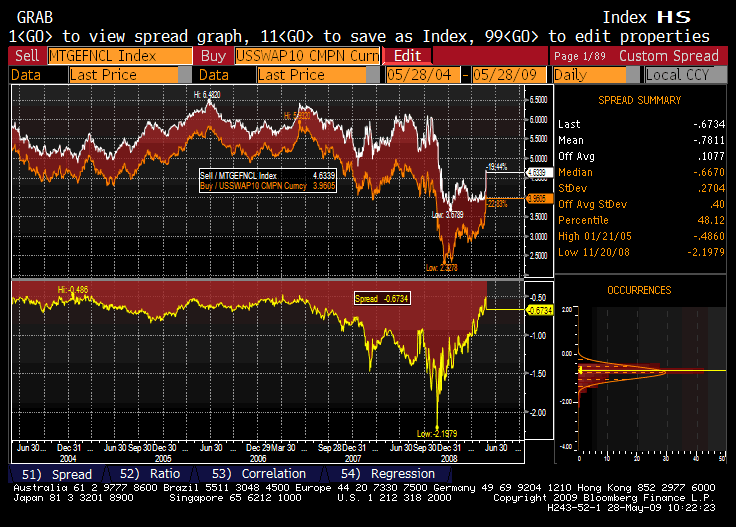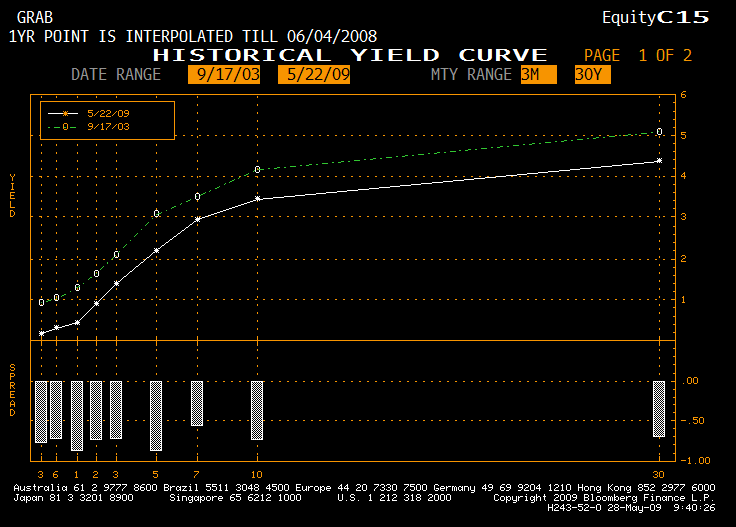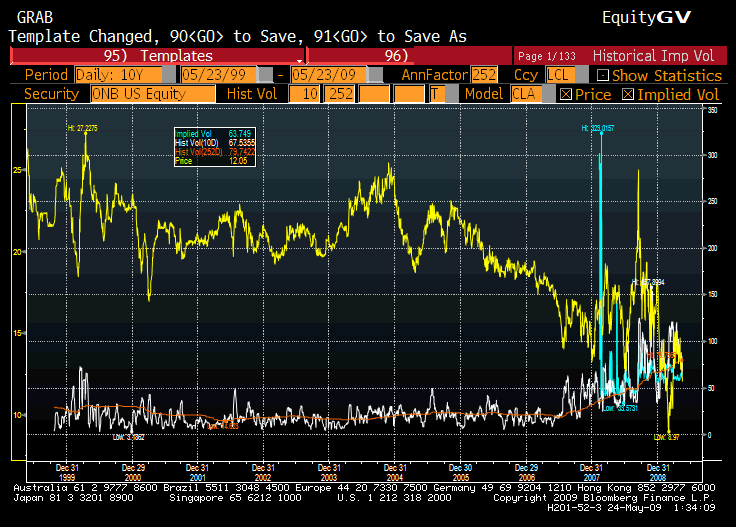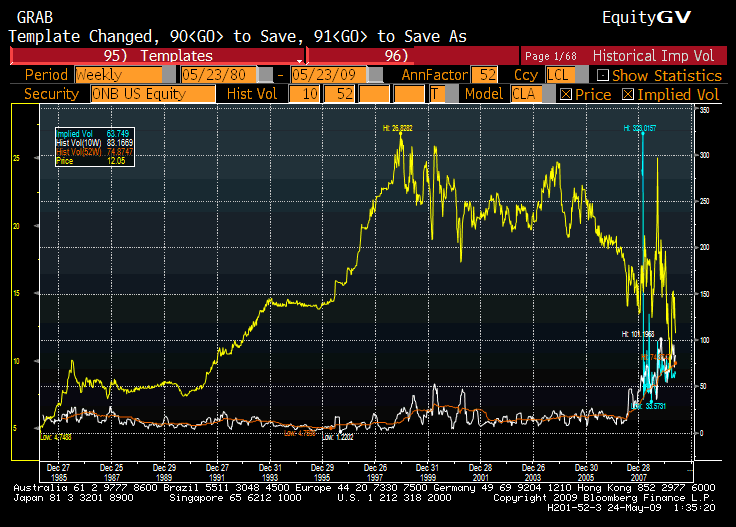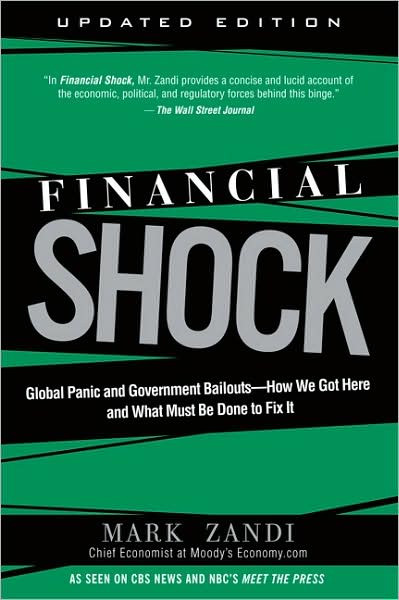Eight Notes on the Actions of the US Government on the Economy
1) I have said it before, but what are the limits of the US Government borrowing money?? Aside from God, everything has a limit.? I appreciate finem respice as she says:
Of course, the next bubble (and perhaps the last for a while) is government. The state government bubble is beginning to burst even as you read this. The federal government bubble is next. You might want to open your mouth and plug your ears.
I view the current rise in Treasury yields as an expression of concern over being paid back in the same purchasing power terms.? The further in time you go out, the lower confidence in the US Government gets.? Given the huge deficits, debts, and unfunded liabilities, how could it be otherwise?
2) So what of the Treasury yield curve then?? Does it threaten Obama’s agenda?? Maybe, if it gets materially worse.? At present, no.? I appreciate what Lacy Hunt said to Barron’s:
But, says Lacy Hunt, chief economist of Hoisington Investment Management, an Austin, Texas, manager of $4 billion in assets, “The sharp rise in Treasury yields isn’t a result of an economic recovery. That occurs when income, production, employment and sales, simultaneously, turn higher. Presently, these indicators merely show a lessened rate of decline.”
There are several possibilities here:
- The rise in long Treasury yields is just an overshoot of the mortgage market.
- Fears of eventual US underpayment in terms of current purchasing power.
- A strengthening economy.
- Some combination thereof.
I favor a combination of 1 and 2.? I don’t see any significant strength here.? I do see worry, but not panic.? The more one wants to borrow, the higher the yield that will be paid.
3) When I was 14, my brother (then 12) wrote Howard Baker, Senator from Tennessee, to ask him about whether a Value Added Tax [VAT] would make sense for the US.? I read the reply letter once, and I remember much of it.? I was impressed with the erudite response; I am even more impressed today, given the facile answers often given by politicians to constituents.? Baker made three main points:
- The revenue raising power of a VAT was tremendous.
- The VAT was “insidious,” in that it took a little here and took a little there, and no one really felt how much was taken.
- He felt that it would slow the US economy down considerably, and so, it wasn’t an idea worth pursuing.
Now we are seeing articles reopening/opposing the idea of having a VAT:
- Once Considered Unthinkable, U.S. Sales Tax Gets Fresh Look
- A National Sales Tax, a better BK for GM, and more?
I agree with Howard Baker — a VAT is insidious.? Taxes should be obvious, and hurt, such that people have an interest in the level of taxation.? Let the government decide what to eliminate in spending, but don’t overtax us.
4) So maybe we get a single regulator for banks?? That will improve consistency of regulation, but will it be consistently good, or will it be a greater regulatory capture?
5) I agree with Felix.? Personally, I don’t think the government should insure anything, even bank deposits, but insuring the senior tranches of securitizations is ridiculous.? It would put the government in charge of subordination levels.? What public interest reason is there for this?? There will always be some sort of relatively safe assets outside of a government guarantee.? If they fail, should the government guarantee them?? Sorry, but AAA, AA, A bonds sometimes fail within a year of issuance.? Not often, mind you, but that’s the way it is.? To do otherwise is to create a flaccid group of creditors that is unwilling? to take modest risks unless they are government-guaranteed.
6) I grew up as a quant, and from my past Pastor who was a Ph. D. in History I learned to appreciate qualitative arguments.? So what value is economic history?? I’m going to stick my neck out here, but I will argue that intelligence is the ability to use analogies validly.? With math, the analogies used are simple, because of the abstraction.? To a lesser extent, the same is true of science.? But by the time we get down to the social “sciences,” the analogies are much more open to question.
Thus all of the articles alleging that the current troubles are akin to: 2001-2, 1994, 1987, 1979-82, 1973-74, 1969, 1962, 1937, 1929-32, etc.? It is easy to make such arguments, and most of them are wrong.? That said, there is a richness in understanding all of the arguments, but not buying them fully.? Listen to Samuel Clemens, “History may not repeat itself, but it sure does rhyme.”? Looking for exactness in analogies fails; analogies are never meant to be exact, just as the parables of Jesus teach one main truth, and subsidiary matters are more questionable.
7) What of inflation?
- Is it still an open question, where the Fed still has some control?
- Or are we facing hyperinflation?
- Or something in-between?
It boils down to this: how easily can the Fed reduce policy accommodation with out derailing the recovery, and will it take less time than it did/will Japan (they are into two lost decades now, are they trying for three?).? There is no free lunch, leaving aside seniorage from being the world’s reserve currency.? The implicit subsidies that the Fed created will leak their way into the money stock, and inflation, eventually.
8)? Remember 2008, long T-bonds were the rage and high yield was trash.? 2009, those two are flipped.? Personally, I would take at least half of my high yield ( and BBB) trade off the table and leave it in cash.



